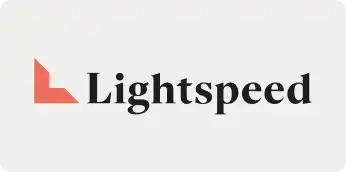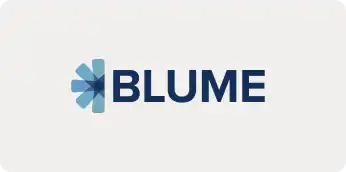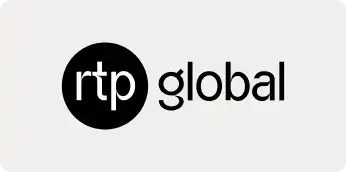The term “product-market fit” appears frequently in the SaaS playbook. But what exactly does it mean? A successful founder is not only a visionary when it comes to product development, he/she is also someone who has their finger steadily on the pulse of the market. This dynamic combination (knowledge of the product and market intuition) allows them to identify user needs and develop products that are compatible with current market conditions. We asked founders to share stories of what factors helped them to arrive at a final product that was fit for the market.
ELAD GIL
A lot of it just comes down to the degree to which you are exposed to being in the flow to discover what customers really need and then build it and address it for them to scale. The hard part is often figuring out what somebody needs. If you do the right analysis, you can discover other things that very large enterprises and companies need. You can start with mid-market and large I should say because you often want to start in mid-market and then you can really address something that has a global impact.
A lot of bad advice can be summed up as post-product-market fit advice being given to pre-product-market fit companies and vice versa. In some cases, some people are six months into their own startup; they have never run anything before. In some cases, people are giving advice without having lived through the situation or really understanding it, and not understanding that they should refer to that founder to talk to somebody that has seen it directly. I think a lot of advice that you can get in a
OUR BIGGEST LEARNING WAS THAT YOU SHOULD DO EXTENSIVE MARKET RESEARCH AND USER RESEARCH BEFORE EVEN THINKING ABOUT MAKING A PRODUCT. BEFORE STARTING SPLASHLEARN, WE MADE SURE THE PRODUCT WE WERE GOING TO CREATE WOULD BE A PERFECT FIT AND SATISFY A REAL NEED.
– ARPIT JAIN
positive way as an investor, as an angel is being “a route board” to people who really understand things well and suggesting that founders or executives connect with those people who really have that depth of knowledge for the specific area that the founder needs help with.
ARPIT JAIN
From my experience, product-market fit is the most underrated yet the most crucial thing to have before starting. We learned this lesson through our first startup, Intinno, an ed-tech SaaS company, which offered an LMS (learning management system) platform for schools and colleges in India. It was created to solve a real problem we saw around us but after two to three years, we realized that even though we had a good product, the market was not ready for it yet. That’s why it’s important to ensure you launch at the right place and at the right time.
Our biggest learning was that you should do extensive market research and user research before even thinking about making a product. Like I mentioned earlier, that is something we did before starting SplashLearn. We made sure the product we were going to create would be a perfect fit and satisfy a real need.
UMANG JAIN
I would say that it was a long and interesting journey going from being people who could code a product to becoming people who can actually build a product along with the ecosystem around it. The biggest lesson has been the realization that just creating the product isn’t good enough.
Increasingly, we focused more on talking to our user base, understanding their aspirations and needs, and moulding our offering to deliver the greatest value. We often talk about the value of time for our users. It’s our belief that even if they spend a few minutes on our product, they must always get value out of it, which keeps us honest and always working towards building a product that users want.
Since SplashLearn is a learning product, it is important to ensure that actual learning is being delivered through it. We have done different things over time to ensure that we have a solid efficacy

portfolio, whether regular testing with users, product instrumentation, or full-blown efficacy studies. Not only does it give us credibility but it also helps us constantly innovate and keep the product relevant for our users.
ABHINAV ASTHANA
First, I had to zero in on the thing that people need from the product. Let’s say you’ve designed the product for five use cases. Your first job is to validate it for those use cases. Of course, people are going to come in and say, “Build five more things.” But watch out, because that can cause you to lose focus. You have to be deliberate and not jump into taking on more to-do items until you have clearly established— whether with data or qualitative insight—that all five of these things are worth building.
Of course, you might soon find out that, say, only one of those five things was useful and the rest were just things you thought were good to have. It’s crucial to know which things fit the market and which things to let go of. At Postman, we had to build that muscle of deleting code, getting rid of code, getting rid of buttons on the interface, and things like that; if anyone would add something, we would say things like, “Get rid of it, do we really need it?”
Now that Postman has evolved, we, of course, support a lot more complicated technologies. But in those early days, we didn’t want to support too many of them as we didn’t yet see the reward moving that quickly. It’s kind of this co-evolving of the product with the market where you are constantly choosing your path. Today, our issue tracker for the Postman product is publicly documented on GitHub, and users give us feedback on everything. When it reaches a critical mass, we say, “Now we are ready.” So, that’s how we’ve gone about product-market fit.
SURESH SAMBANDAM
The bulb moment happened for us when we sold our platform to a large enterprise company for close to
WE HAVE BUILT THESE TOOLS FOR OURSELVES, CAN THESE TOOLS BE HELPFUL FOR DATA TEAMS AROUND THE WORLD?
– PRUKALPA SANKAR
$70,000. This was before Kissflow. We were a small company then, and the customer is a UK-based biscuit manufacturing company called Unibic. I had to go to the UK and meet with the CIO. We discussed the roll-out when the CIO opened his laptop and showed me a beautiful, sleek UI he had made that had to be slapped on top of our platform that they were going to use to completely automate their internal workflows. At that time, we had the full platform but not the specialized workflow platform, so naturally, we were very excited to see that the customer had gone ahead and done this himself. I asked him how much they had spent on all this, expecting he would say something to the tune of $5000–$10,000. He said $100,000! Some European design agencies had come in and developed the UI/UX. When I heard they had spent $100K for the UI/UX it was actually a rude shock. We are selling a whole platform for $70,000, and here was someone who was spending $100K for just the UX and UI! That really made us take a deep look and think about what this is. This whole thing revolves around minimum functionalities and a tremendous user experience. This was the turning point for us when the product became the product, which is now Kissflow. Although the customer was doing a custom implementation on top of our platform, it inspired us to simplify our platform to create Kissflow.
PRUKALPA SANKAR
Back in 2018, we had this question, which was: We have built these tools for ourselves, can these tools be helpful for data teams around the world? We spent about three months in a phase where we said, let’s first understand if these are top-of-the-line problems for data teams around the world and are these even problems people care about solving. We had about 200 open-ended conversations before we even built the first line of code on the product. We spoke to some of the best data teams worldwide to understand their top three challenges and the things they spent the most time on. We got about 12 chief data officers on a phone call to validate these assumptions about the problems we were solving. We interviewed them to quantify the value of the problems and to understand if they had tried solving these problems before. That really helped us define product positioning and it also gave us enough confidence to start scaling and go to market. We are still very much in that zero-to-one phase. We are constantly trying to learn from the market because the ecosystem we operate in is changing very rapidly.
GIVEN THAT WE HAD INVESTED IN THE RESTAURANT, WE DECIDED NOT TO SHUT IT DOWN, SEE IT THROUGH AND LEARN FROM IT INSTEAD. THAT WAS THE PURSUIT, THAT WAS THE IDEA. BUT THEN, THE UNIVERSE CONSPIRED. AND THERE WAS POSIST, BECAUSE WE COULD CLEARLY SEE THAT WE WERE SOLVING A PROBLEM AT RESTAURANTS WHICH OTHER RESTAURATEURS WERE TALKING ABOUT. WE GATHERED OUR FIRST TEN CUSTOMERS WHEN WE DID NOT EVEN HAVE A COMPANY NAME.
— ASHISH TULSIAN



















